Band Saw vs Table Saw: Which One to Choose?
-
Ed Malaker
- Last updated:
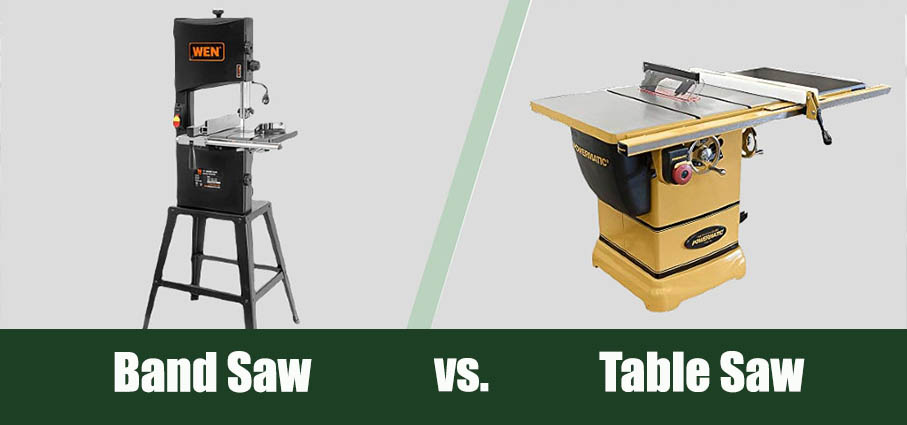

Both the band saw and the table saw are extremely popular tools in any workshop, but choosing which one is more useful can be challenging. If you find yourself with the budget to buy one, but you aren’t sure which one to get, you’ve come to the right place. We’ll take a closer look at both tools to see how they differ and what types of projects they are better suited to tackle.

Overview of Band Saw
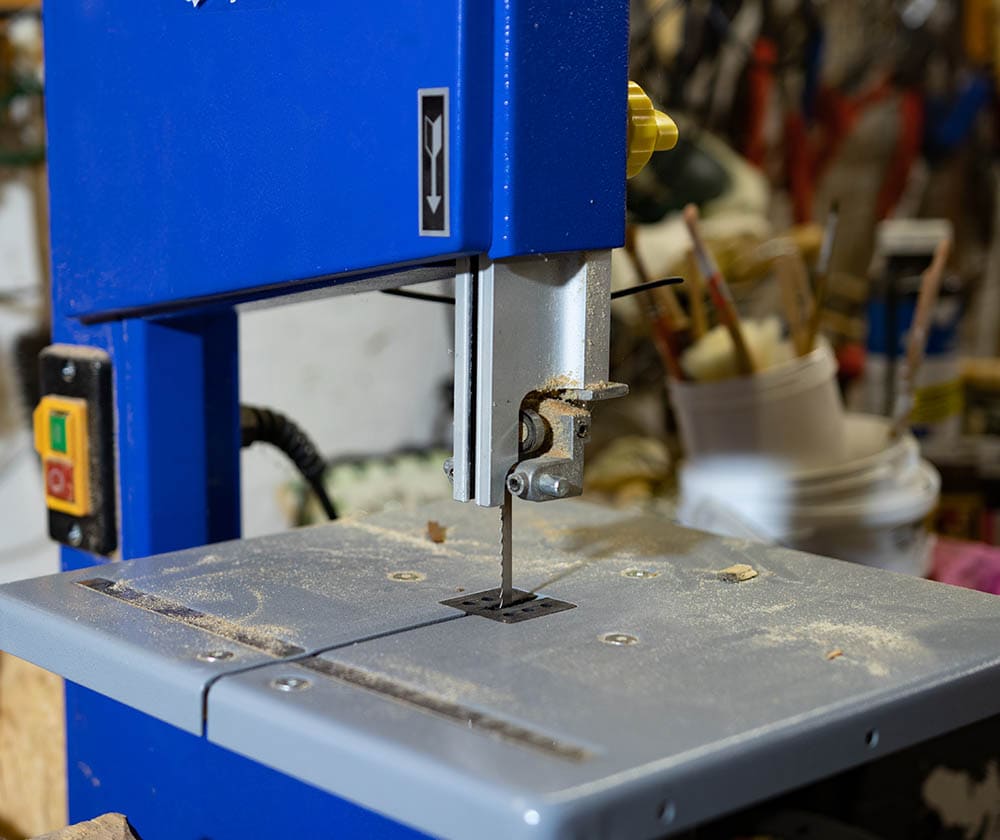
How it Works
The bandsaw uses a large metal band that has saw teeth on one edge. The motor spins the band rapidly, and since it rotates, it’s capable of much higher speeds than saws like the jigsaw that goes up and down. The machine remains stationary, and you push the wood into the blade to cut. Since the blade is so thin, it can make extremely precise cuts, and woodworkers frequently use it to make decorative cuts in the wood. You can even use the bandsaw to create curved cuts. The downside to this type of saw is that it’s difficult to create a long straight line, and the blade dulls quickly, especially when cutting hardwoods.
Types Of Bandsaws
Vertical Bandsaw
The vertical bandsaw is the most popular kind that you will find in most workshops. It gets its name from its blade that is fixed straight up and down in a vertical position. To use it, you lay the board down flat in front of the blade and push it into it slowly. Since the blade is so thin, you can tilt the wood, creating a pattern on the edge of your wood.

Horizontal Bandsaw
The horizontal bandsaw is identical to the vertical bandsaw in terms of how it works. However, the horizontal bandsaw rotates the blade 90 degrees so that it’s in a horizontal position. This blade position allows you to cut wide boards into thinner wide boards, which can be extremely helpful.
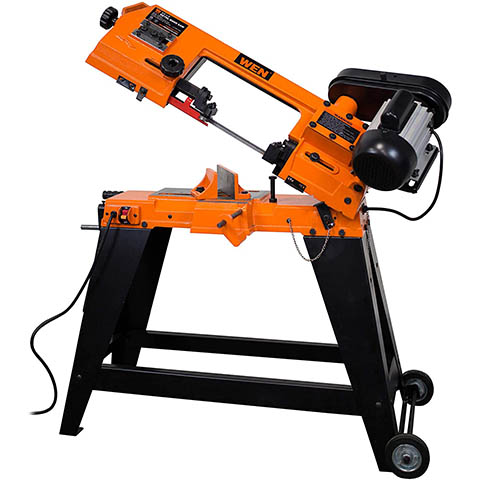
Portable Bandsaw
As you may have guessed, the portable bandsaw is the same as the others we’ve looked at so far but in a smaller, portable package. We usually see them as vertical band saws, but portable, horizontal band saws are also available. This tool is useful when you need to do a small job away from your workshop.
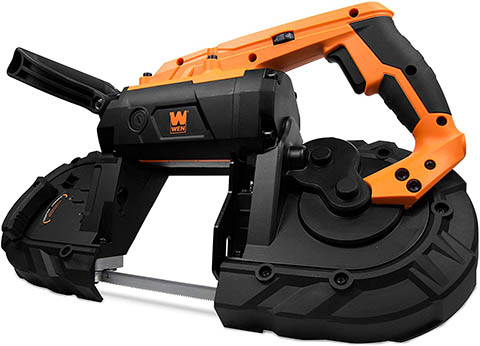
- You can cut intricate designs into the wood
- You can make extremely precise cuts
- It’s not as intimidating for beginners
- You can create a curved cut
- It’s not great for long straight cuts
- The blade dulls quickly on big jobs and hardwoods

Overview of Table Saw
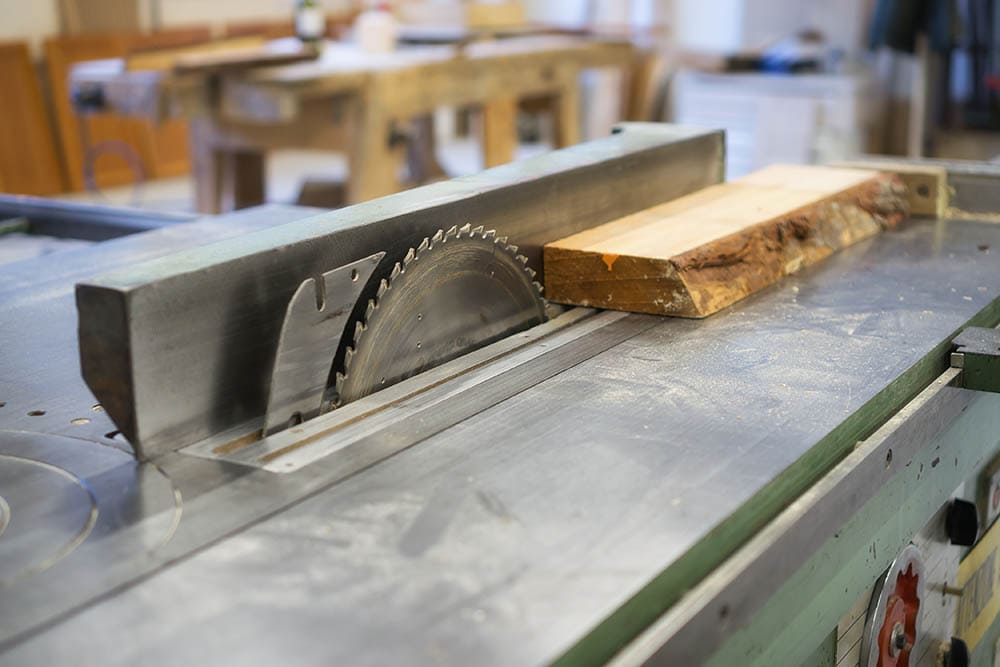
How it Works
The table saw also spins the blade instead of using an up and down motion, but the table saw blade is round with cutting teeth on the outer edge. This blade is much wider, thicker, and perfectly suited for cutting dense hardwoods and creating long straight lines. The blade is attached to a motor under the table. There is a slot in the table that allows the blade to protrude out so it can cut the wood. The real star of the table saw are the alley accessories you can attach to the table to create straight cuts and complex angle cuts that remain perfect over a long distance.
Types Of Table Saws
Standard Table Saw
The table saw is a highly adjustable tool, so you won’t find as many different types as you do band saws. The biggest difference between them is that the table saw can vary considerably in terms of size and accessories. Larger tables allow you to complete bigger projects and usually have sturdier rails and guides that allow you to cut angles accurately. In comparison, smaller tables are easier to set up and fit into your workshop and budget. The downside to the table saw is that you can’t make curves or more intricate designs, and it’s not portable. While they can cut all types of angles, they’re only good for working in a straight line.
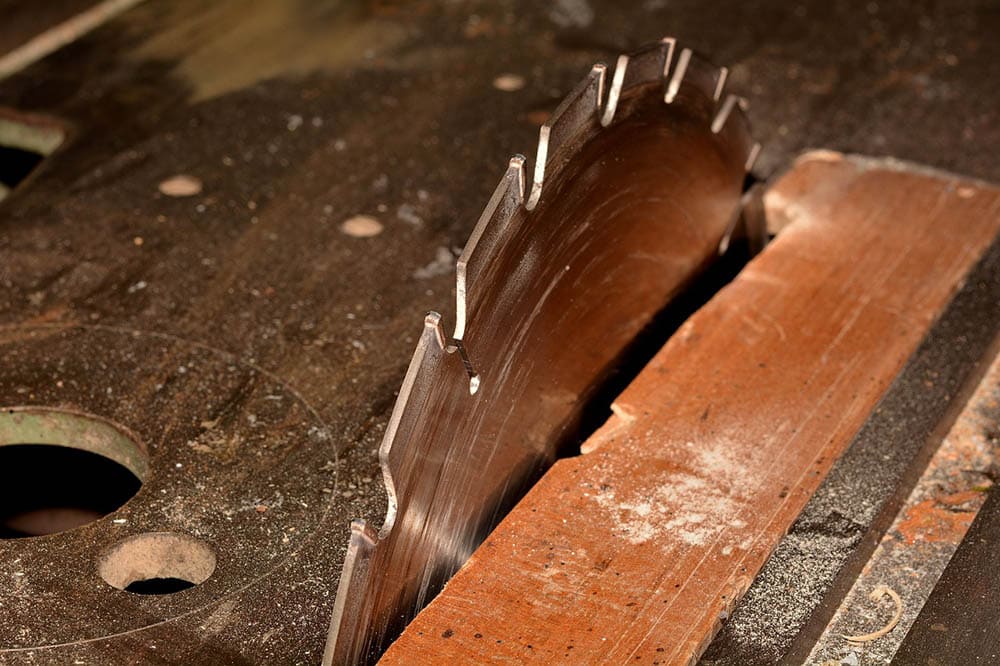
Portable Electric Hand Saw
The portable electric hand saw takes the saw out of the table to give you a portable tool for cutting large boards and straight lines on the go. This tool provides all of the power of a table saw, but you don’t get the adjustable guides and rails to keep your cuts straight, so you need to make careful measurements. Many woodworkers start with an electric hand saw because it’s much less expensive than a table saw and upgrade later when they make a profit.

- Powerful
- Can cut hardwoods
- Highly adjustable
- Can’t cut curves
When Should I Use a Bandsaw?
We recommend using a bandsaw when you need to cut intricate designs into thin, soft wood. With practice, you’ll be amazed at how versatile this tool is and how it can make all of your projects look more attractive by eliminating the hard edges that often give away inexperienced woodworkers.
When Should I Use a Table Saw?
If you are a carpenter that frequently cuts large boards, you need a table saw. This tool helps you cut the boards you need and can make everything from walls to a corner desk. A handsaw can help you put off buying one of these tools for a short time, but the table saw is one of the most common tools in any woodworking shop.
- When cutting thin wood or softwood
- When making intricate cuts
- When you need a curved cut
- When you cut a lot of lumber
- When you need straight cuts
- When you are cutting hardwood
Related Reads:

Conclusion
Unless you cut a lot of boards, we think most people can get away with a handsaw followed by a bandsaw followed by a table saw, since the hand so I can do a lot of the things the table saw can do. This order also matches how expensive they are, and a table saw can set you back several hundred dollars. However, you will need both of these showers to complete all of your woodworking projects, so we recommend you start saving as soon as possible.
Contents
